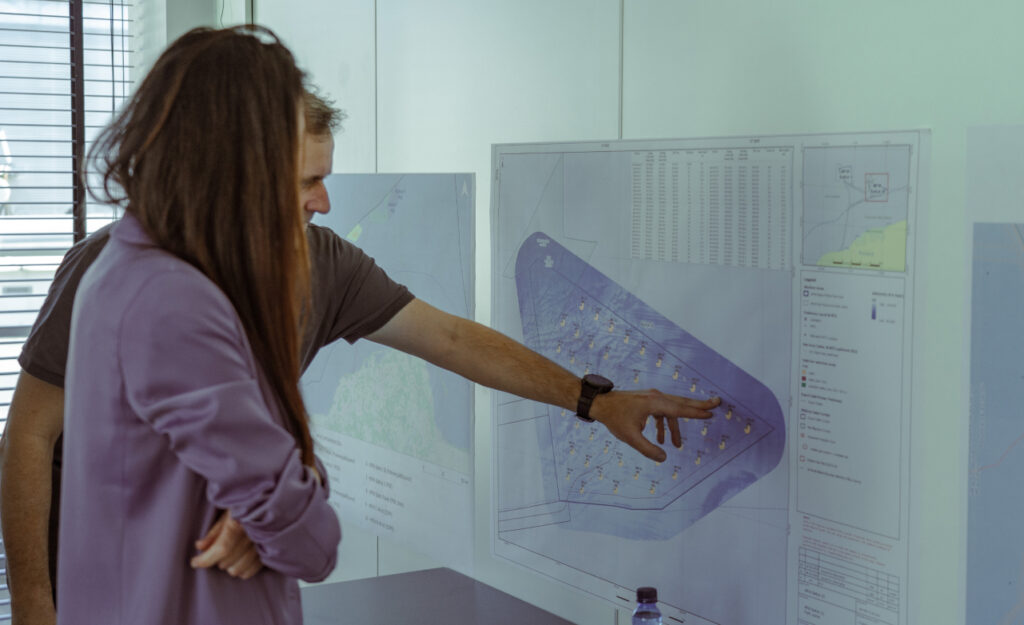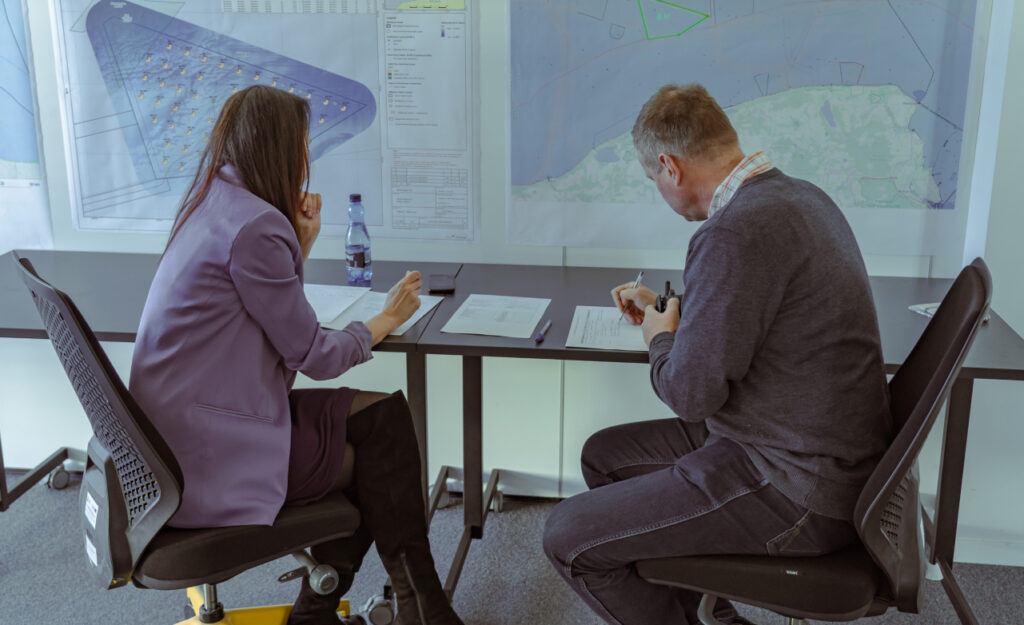- Polenergia Group
- Environment
- Society
- Management
The ability to respond appropriately in emergency situations during the construction and operation of offshore wind farms is the basis for their safe operation. At the invitation of Equinor and Polenergia, representatives of the public sector, government and local authorities took part in an innovative workshop simulating accidents at sea.

The companies invited more than a dozen public administration units, representatives of the military and emergency services, which are responsible for safety and emergency management, to participate in the interactive workshop, whose main objective was to improve practical skills in potential emergency situations in the area of offshore wind farms.
During the workshop in Gdansk, participants took on the roles of employees of a future monitoring center for offshore wind farms. Representatives of a number of units representing, among others, rescue and emergency response services were tasked – using the latest computer technology – to practice procedures and how to respond in emergency situations. Participants were able to check the effects of decisions made and messages issued on the screen in real time. The computer simulation used during the workshop is an innovative tool that allowed realistic reproduction of roles and situations during crisis events and accompanying rescue operations. The exercise was conducted on a virtual mock-up of the Baltic III offshore wind farm, programmed especially for the simulation, replicating its real location and using existing 3D models of wind turbines. During the workshop, participants faced several emergency situations that could potentially occur during operations. Among them were rescuing a shipwrecked person using a rescue boat and helicopter, acting when there is no communication with a ship heading towards the farm, or responding to the presence of an unidentified diver on the farm.


Participants were able to use a virtual rescue-patrol boat, rescue helicopter or unmanned aerial vehicle to undertake rescue operations. They communicated with each other by giving commands via walkie-talkies.
For Equinor and Polenergia, which are jointly developing three offshore wind farm projects in the Polish part of the Baltic Sea with a capacity of about 3 GW, the issues of maintaining safety and being able to respond appropriately in emergency situations both at the stage of construction and operation of these facilities are extremely important. Therefore, already now, even before the start of construction, investors are taking measures to prepare the relevant services for emergency situations that could potentially occur at an offshore wind farm.
All workshop participants agreed that in emergency situations the most important thing is cooperation and communication between the monitoring center of offshore wind farms and safety and rescue units. This allows the problem to be solved efficiently and safely with the proper procedures.
The idea of the workshop is part of the strategy pursued by Polenergia and Equinor to actively involve all stakeholders in the process of offshore wind energy development. This includes public sector units, government and local administration. Training activities for administration and emergency services are also part of the investors’ Flagship Programs: “Promotion and Information Center” and “Offshore Competence Academy.” The first aims to provide transparent and full access to project information, and the second to improve the skills of personnel in the domestic offshore wind industry, including initiating and supporting training in this area.


The workshop was led by experienced trainers and instructors from Squadron, an ASE Group company that specializes in providing safe, comprehensive aviation products and services for drones, as well as simulators and trainers.
The training sessions – conducted as part of a series of workshops for the administration – will continue later this year.
Equinor and Polenergia are jointly developing three offshore wind farm projects in the Polish part of the Baltic Sea with a total capacity of about 3 GW, enough to power more than 4 million Polish households. The 1.44 MW Bałtyk II and Bałtyk III farms – where geotechnical and geophysical surveys have already been carried out – will be located in Leba, approximately 37 and 22 kilometers from the shore. First electricity production from both projects is expected in 2027. The third project, Baltic I with a capacity of 1.56 MW, will be commissioned in 2029.
Equinor and Polenergia’s investments are part of a project to transform Poland’s power sector, which aims to build offshore power plants with a total capacity of nearly 11 GW in the Polish part of the Baltic Sea by 2040.
Szanowny użytkowniku, w zgodzie z założeniami RODO potrzebujemy Twojej zgody na przetwarzanie danych osobowych w tym zawartych w plikach cookies. Dowiedz się więcej.
The cookie settings on this website are set to "allow cookies" to give you the best browsing experience possible. If you continue to use this website without changing your cookie settings or you click "Accept" below then you are consenting to this.